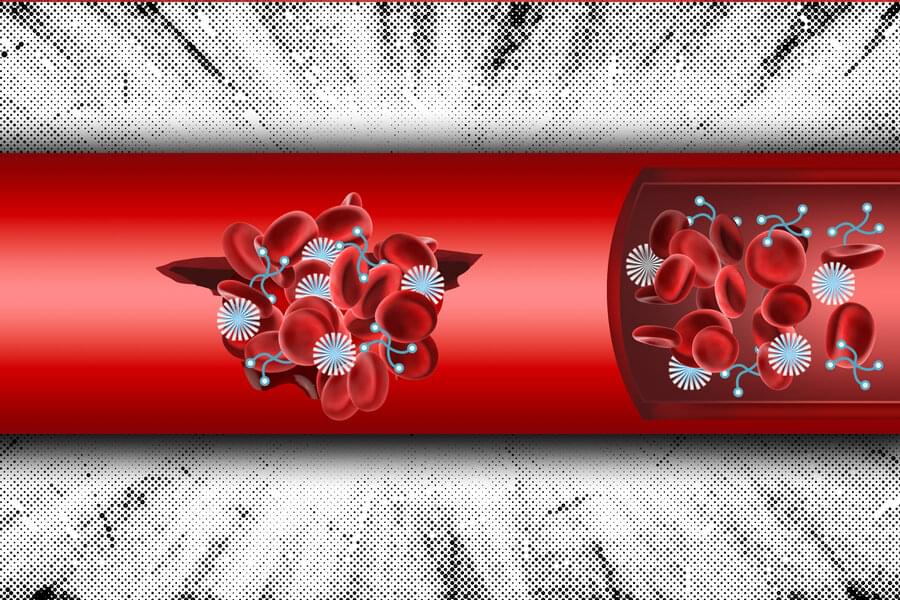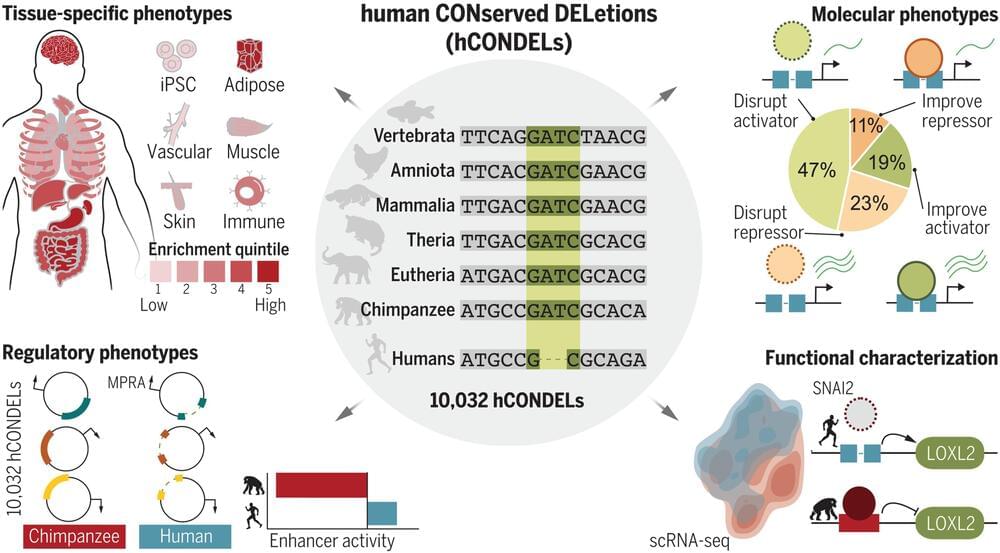An experiment by disgraced scientist He Jiankui resulted in the birth of the first babies with edited genes. What happened next?
Get the latest international news and world events from around the world.
AnthropoAge: Biological Age Prediction Without Blood Testing
Join us on Patreon! https://www.patreon.com/MichaelLustgartenPhD
Discount Links:
NAD+ Quantification: https://www.jinfiniti.com/intracellular-nad-test/
Use Code: ConquerAging At Checkout.
Green Tea: https://www.ochaandco.com/?ref=conqueraging.
Oral Microbiome: https://www.bristlehealth.com/?ref=michaellustgarten.
Epigenetic Testing: https://trudiagnostic.com/?irclickid=U-s3Ii2r7xyIU-LSYLyQdQ6…M0&irgwc=1
Use Code: CONQUERAGING
At-Home Blood Testing: https://getquantify.io/mlustgarten.


Look out! New card skimmer threat reaches Texas
Hollywood Park police also suggested consumers use pumps that are closer to the store or that have video surveillance as thieves typically target pumps that conceal them while they switch out their device.
Colby also told KENS 5 consumers should use the tap-to-pay option when possible.
“Really the best thing you can do is use tap-to-pay because you are not exposing your magnetic stripe. They’re going after the information on the mag stripe. It you don’t swipe the card it’s your safest bet,” Colby said.

Deep-learning system explores materials’ interiors from the outside
Maybe you can’t tell a book from its cover, but according to researchers at MIT you may now be able to do the equivalent for materials of all sorts, from an airplane part to a medical implant. Their new approach allows engineers to figure out what’s going on inside simply by observing properties of the material’s surface.
The team used a type of machine learning known as deep learning to compare a large set of simulated data about materials’ external force fields and the corresponding internal structure, and used that to generate a system that could make reliable predictions of the interior from the surface data.
The results have been published in the journal Advanced Materials, in a paper by doctoral student Zhenze Yang and professor of civil and environmental engineering Markus Buehler.
Godel & Einstein | Einstein walked with Gödel | Kurt Gödel | Incompleteness theorem | Logic
This video is about the story of two geniuses, Albert Einstein and the famous logician Kurt Godel. It is about their meeting at IAS, Princeton, New Jersey, when they both walked and discussed many things. For Godel, Einstein was his best friend and till his last days, he remain close to Einstein. Their nature was opposite to each other, yet both of them were very good friends. What did they talk about with each other? What did they share? What were their thoughts? For Godel, Einstein was more like his guide and for Einstein, it was a great pleasure to walk with him.
In the first episode, we discover their first meeting with each other and the development of friendship between them.
Subscribe for more physics and mathematics videos:
Join this channel to get access to perks:
https://www.youtube.com/channel/UCVDb3R8XY1FIEIccTT1NnpA/join.
Channel: Join this channel to get access to perks: / @physicsforstudents.


China simulates algorithm to evade US’s sophisticated hypersonic missile defense system
People’s Liberation Army (PLA) researchers claim they have created algorithm-based technology to defeat sophisticated hypersonic missile interception systems.
Engineers led by Zhang Xuesong from China’s Strategic Support Force Information Engineering University developed the algorithm that analyzes the trajectory of hypersonic missiles in order to avoid detection by missile defense systems, South China Morning Post (SCMP) reported on Saturday.
The algorithm “can analyze the trajectory of these hypersonic weapons to help them avoid missile defense systems, including advanced systems under development” in the US, claimed the engineers in a paper published in the Chinese journal Common Control and Simulation last month.

Two-component system could offer a new way to halt internal bleeding
MIT engineers have designed a two-component system that can be injected into the body and help form blood clots at the sites of internal injury. These materials, which mimic the way that the body naturally forms clots, could offer a way to keep people with severe internal injuries alive until they can reach a hospital.
In a mouse model of internal injury, the researchers showed that these components—a nanoparticle and a polymer—performed significantly better than hemostatic nanoparticles that were developed earlier.
“What was especially remarkable about these results was the level of recovery from severe injury we saw in the animal studies. By introducing two complementary systems in sequence it is possible to get a much stronger clot,” says Paula Hammond, an MIT Institute Professor, the head of MIT’s Department of Chemical Engineering, a member of the Koch Institute for Integrative Cancer Research, and one of the senior authors of a paper on the study.

Information ‘deleted’ from the human genome may be what made us human
What the human genome is lacking compared with the genomes of other primates might have been as crucial to the development of humankind as what has been added during our evolutionary history, according to a new study led by researchers at Yale and the Broad Institute of MIT and Harvard.
The new findings, published April 28 in the journal Science, fill an important gap in what is known about historical changes to the human genome. While a revolution in the capacity to collect data from genomes of different species has allowed scientists to identify additions that are specific to the human genome —such as a gene that was critical for humans to develop the ability to speak—less attention has been paid to what’s missing in the human genome.
For the new study researchers used an even deeper genomic dive into primate DNA to show that the loss of about 10,000 bits of genetic information—most as small as a few base pairs of DNA—over the course of our evolutionary history differentiate humans from chimpanzees, our closest primate relative. Some of those “deleted” pieces of genetic information are closely related to genes involved in neuronal and cognitive functions, including one associated with the formation of cells in the developing brain.